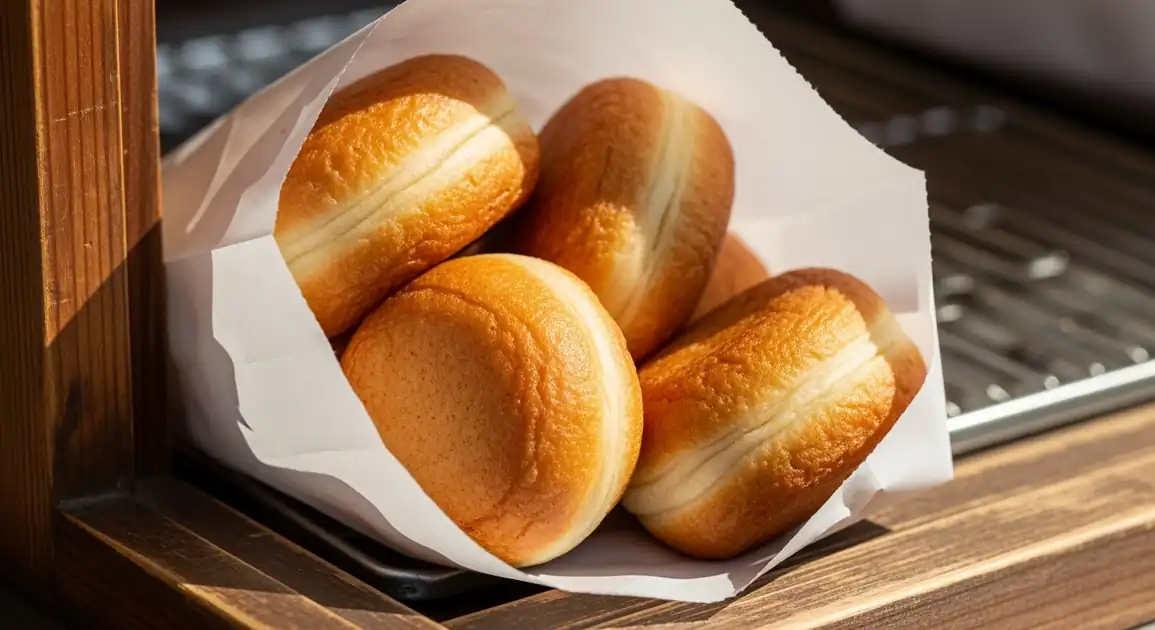Agemanju (Deep-fried Manju)
揚げまんじゅう

Description
Tokyo offers numerous opportunities to try Agemanju, especially in traditional districts like Asakusa. Nakamise-dori, the street leading to Senso-ji Temple, is particularly famous for its Agemanju shops, often with queues. You can also find them in department store food halls ('depachika') across the city.
Dietary Information
Serving information
Serving style
Typically served very hot in a small branded paper bag, intended for immediate consumption while walking or standing nearby.
Quick facts
Nakamise-dori shops: Roughly 9 AM / 10 AM to 5 PM / 6 PM. Depachika: 10 AM / 11 AM to 8 PM / 9 PM.
Safety Tips
What to Look For
-
Vendor actively frying or keeping Agemanju visibly hot.
Ensures the Agemanju is fresh, crispy, and served at a safe temperature, minimizing risk and maximizing taste.
-
Clean oil (relatively light color, no excessive smoke or debris).
Hot, clean oil cooks efficiently, reduces greasiness, and prevents off-flavors or harmful compounds from burnt oil.
-
Clean shop front, utensils, and handling practices.
General cleanliness indicates better hygiene standards, reducing the risk of contamination.
-
High customer turnover.
A busy shop usually means the Agemanju are freshly made and haven't been sitting around for long.
What to avoid
-
Agemanju that looks cold, stale, or has been sitting out for a long time.
Best enjoyed fresh for texture and safety. Cold fried food can be unappetizing and potentially harbor bacteria if left at room temperature too long.
-
Excessively dark, dirty-looking, or smoking frying oil.
Indicates old or overheated oil, which negatively impacts flavor and can contain undesirable compounds.
-
Vendors with poor hygiene (e.g., handling money then food without gloves/washing hands).
Increases the risk of bacterial contamination.
-
Agemanju that looks overly greasy or soggy.
Suggests improper frying temperature or technique, affecting quality and enjoyment.
Price information
Price range
Budget tips
- Expect prices around 130-250 JPY per piece on Nakamise-dori.
- Depachika versions might be slightly more expensive (200-400 JPY).
- Basic anko fillings are usually the cheapest.
- Specialty fillings like chestnut or unique seasonal flavors may cost more.
Value indicators
- Served piping hot and freshly fried.
- Crisp exterior without excessive oiliness.
- High-quality filling (flavorful anko, distinct matcha taste, etc.).
- Reputable shop with good reviews or steady queues.
Where to Find This Dish
Asakusa (Nakamise-dori)
The most famous area for Agemanju in Tokyo, with multiple dedicated shops along the approach to Senso-ji Temple.
Senso-ji Temple, Kaminarimon Gate, Nakamise-dori Shopping Street
10 AM - 5 PM
Sugamo (Jizo-dori)
Known as 'Grandma's Harajuku', this traditional shopping street has shops selling classic snacks including Agemanju.
Kogan-ji Temple, Sugamo Jizo-dori Shopping Street
11 AM - 4 PM
Major Department Stores (e.g., Ginza, Shinjuku, Shibuya)
Check the 'Depachika' (basement food halls) for stalls selling Agemanju, often from well-known brands.
Mitsukoshi Ginza, Isetan Shinjuku, Takashimaya Nihonbashi, Shibuya Scramble Square
11 AM - 7 PM
Vendor Tips
- Shops on Nakamise-dori often have signs indicating their different fillings.
- Some popular Asakusa shops (like Asakusa Kokonoe) often have queues, a sign of freshness and popularity.
- Be prepared to eat it quickly while standing, as seating is rare.
- Depachika stalls might offer nicer packaging if buying as a small gift.
How to Order
Regional Variations
-
Multiple Fillings Offered
(多様な餡)
Shops in Tokyo, especially Asakusa, typically offer a wider variety of fillings simultaneously (e.g., koshian, tsubuan, matcha, goma, imo, kuri, seasonal) compared to smaller towns.
-
Branded Agemanju
(有名店の揚げまんじゅう)
Certain shops in Asakusa (like Kokonoe) are famous specifically for their Agemanju, becoming a brand name in themselves.
-
Monjayaki Agemanju
(もんじゃ揚げまんじゅう)
A rarer, novelty variation sometimes found in areas known for Monjayaki (like Tsukishima), incorporating savory elements, though very uncommon.
Cultural context
History
Manju itself has origins tracing back to China, introduced to Japan centuries ago and adapted into countless variations ('wagashi'). The practice of deep-frying Manju (Agemanju) likely emerged as a popular street food innovation, possibly influenced by tempura techniques, adding textural excitement and warmth, especially appealing to visitors exploring temple grounds or bustling shopping streets like Asakusa's Nakamise-dori in Tokyo, where specific shops have become famous for it.
Local significance
In Tokyo, Agemanju is strongly associated with Asakusa and the Senso-ji Temple visit experience. It's considered a must-try local specialty when visiting the area.
Eating customs
- Eat while hot for the best texture.
- Dispose of the paper wrapper in designated trash bins.
- While eating while walking is common on Nakamise-dori, be mindful of crowds.